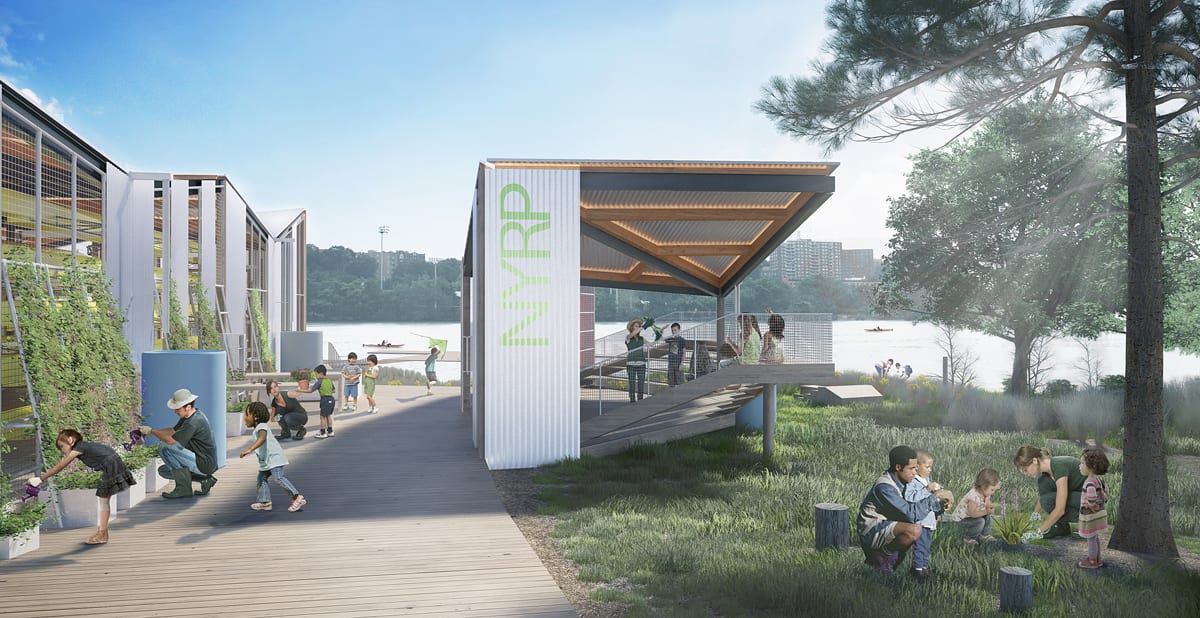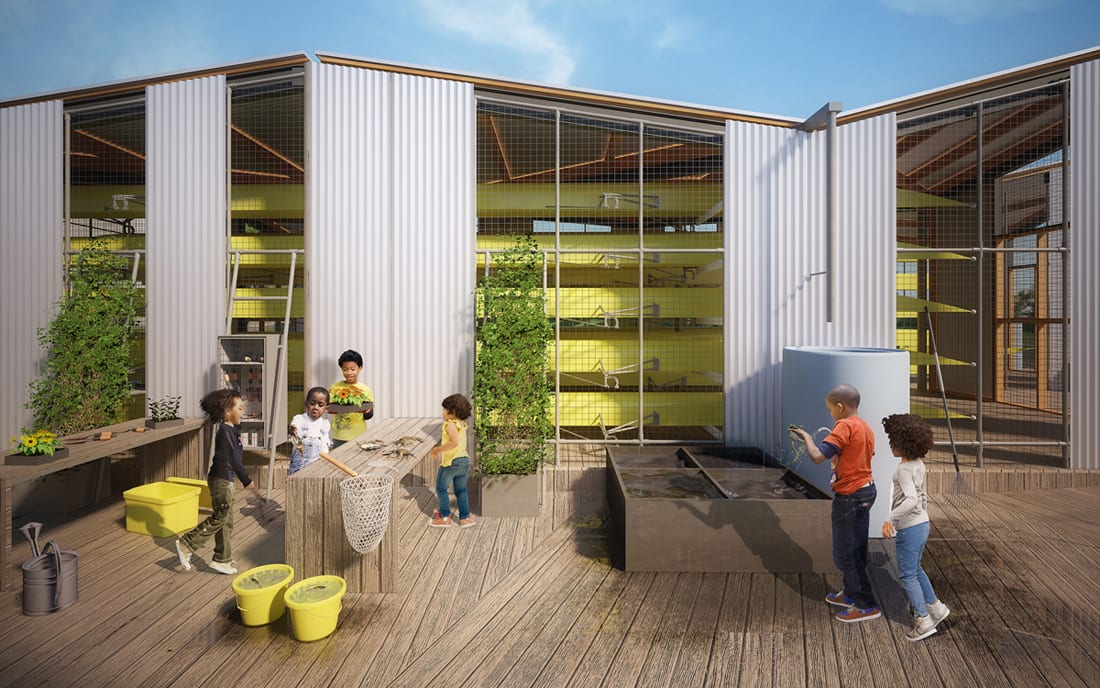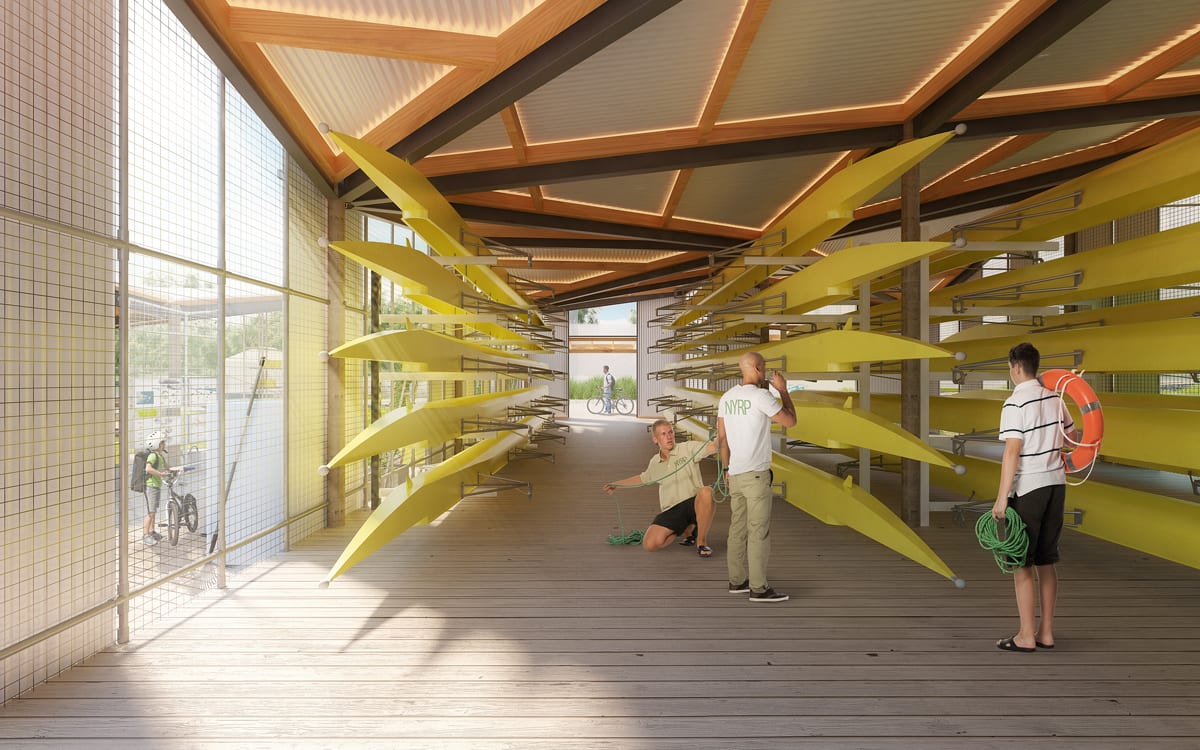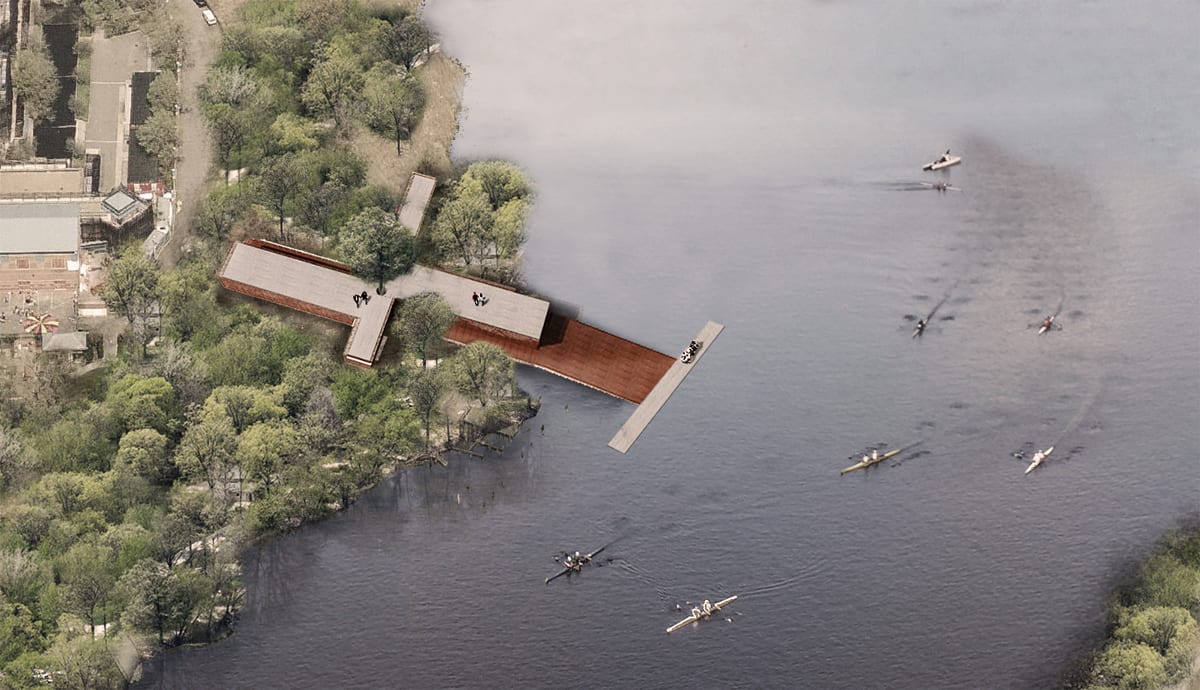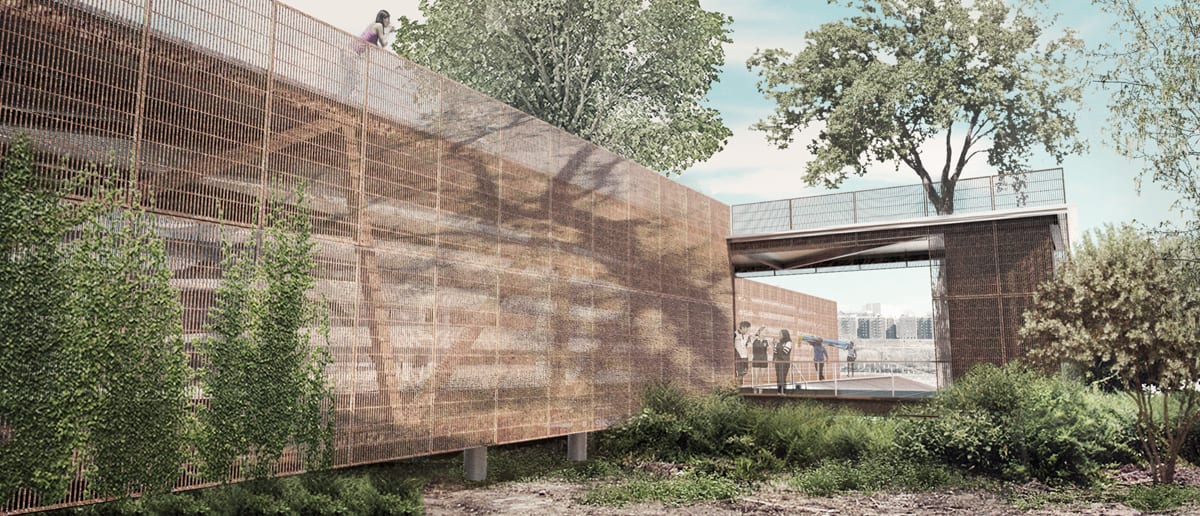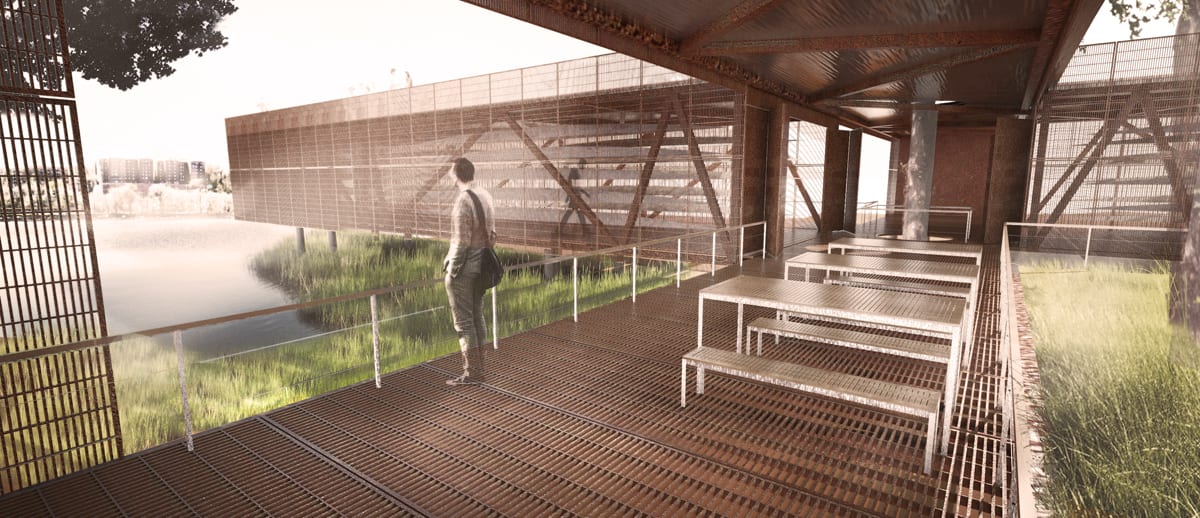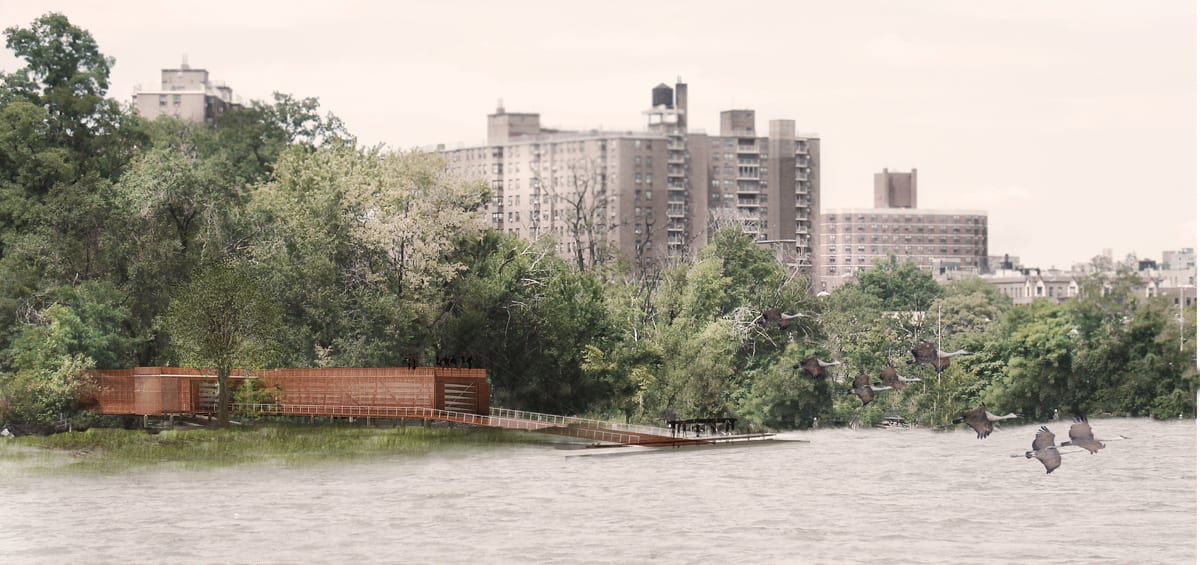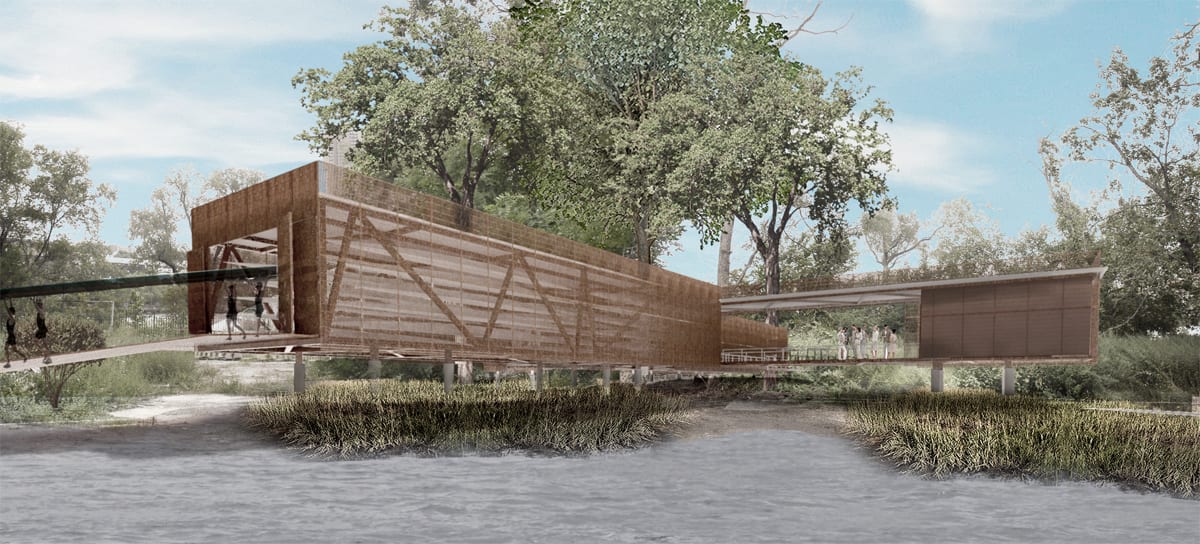The site for the Pavilion Design Competition on New York’s East River was formerly a major center for rowing and other water sports along the Harlem River throughout the 18th and 19th centuries, and was home to several dozen boat clubs until the 1950s. Throughout the decades following, the area became an illegal garbage dump before the New York Restoration Project (NYRP) intervened and partnered with New York City Parks to conduct a massive cleanup project in 1996. The group removed tons of debris, silt and toxic waste, and replanted the shoreline with native plant species. The park is currently maintained by NYRP, and encompasses five beautifully reclaimed acres, with a cherry tree grove, a saltwater marsh, a children’s learning garden, the Peter Jay Sharp Boathouse, a scenic bike path, a freshwater pond, and more.
In July, NYRP launched a competition to ensure storm and social resilience along the Harlem River shoreline at Sherman Creek Park, located in Inwood/Washington Heights, traditionally an under-resourced region of New York City. In response to Mayor Bloomberg’s proposition to increase resilience of infrastructure citywide, NYRP invited eight emerging NYC-based architecture firms to participate. In September, NYRP shortlisted Bade Stageberg Cox (BSC) along with three other finalists, Desai/Chia Architecture, Urban Data + Design, and WORKac. These submissions were reviewed by a jury that included NYRP Founder and Board Member, Bette Midler, and world-renowned architects, sustainability experts, and civic decision-makers, including NYRP board members Todd DeGarmo, CEO and Principal of Studios Architecture, and Ed Hollander, President of Edmund Hollander Landscape Architects, as well as John Rhea, Board Chairman of NYC Housing Authority, and Christopher Sharples, Principal of SHoP Architects. Susanna Sirefman of Dovetail Design Strategists served as the competition advisor overseeing the development and management of the competition.
“We’re thrilled to see such innovative and creative proposals responding to our call for storm-resistant architecture on the banks of the Harlem River,” said Amy Freitag, NYRP Executive Director. “BSC’s thoughtful approach to providing access to the water’s edge directly responds to the city’s call for resilient design, making Sherman Creek Park a spectacular destination for local residents, students, rowers and anyone who seeks to discover the Northern Manhattan waterfront park.”
The Pavilion’s site, currently known as the “Former Boat Club Site,” is a flood plain zone frequently inundated by storms and tides. Entitled Edge Portals, the winning design by Bade Stageberg Cox incorporates flooding as an integral part of the life cycle of the architecture. It consists of two buildings, an open classroom and a boat storage building, situated along the site’s newly constructed shoreline. The layout places the buildings on twin peninsulas at the water’s edge and orients the structures towards the water, creating a direct connection with the river.
“We chose to site the buildings on the peninsulas where the land interlocks with the river, directly engaging the waterfront and highlighting the relationship between the city and the river,” said Tim Bade, Principal at Bade Stageberg Cox. “Together, the classroom and boathouse form a threshold between land and water.”
To address flooding, the classroom and boat storage building are constructed with a metal skin made of expanded weathered steel panels, with slotted openings that allow water to flow in and out freely. In addition, a cistern will store and reuse stormwater for garden irrigation, and a rock garden at the site’s lowest elevation will collect storm water and run-off.
In addition to its storm resilience, the Pavilion also allows NYRP’s education team to embrace the natural environment and storm events as learning opportunities. The open classroom will have sustainable features that complement and interact with the natural environment, such as a rainwater skylight to provide natural light within the space and act as a rainfall gauge, and water tables at which children can conduct water testing and analyze microbial samples with microscopes.
The design incorporates a ‘science cove,’ a waterside classroom for educational programming and active engagement with the river. This cove is created by passageways leading from the peninsulas to a floating dock. It will host a variety of activities, including seining, wildlife observation, oyster gardening, and boating instruction protected from boat wakes and river turbulence. In addition, the site will feature:
§ benches that also function as 100-year flood markers;
§ ‘tidal mirrors’ that will capture water and mark high and low tides; and a solar garden with photovoltaic panels that will power path and building lighting. Together, the buildings and landscape offer rich opportunities for boating, recreation, and the exploration of nature and science. With goals to secure funding for the project, estimated at approximately one million dollars, the new site will harbor a vibrant waterfront culture that has been absent from this region for decades.

Entitled Edge Portals, Bade Stageberg Cox’s design takes advantage of the site’s interlocking profile with the river by placing two new buildings on twin peninsulas at the water’s edge. Oriented towards the water, the buildings are like portals, which frame views of the landscape and create a direct connection with the river. Unlike much of New York City’s new waterfront development, Edge Portals blurs the line between shore and river, allowing water to enter the buildings and the landscape and encouraging visitors to explore beyond the water’s edge through boating, walking out onto the floating dock, and engaging with the site’s diverse ecology.

Drawings and renderings by Bade Stageberg Cox
The FloodLAB designed by Desai/Chia proposed a boat pavilion and an education pavilion connected by an activity promenade and a flood visualization deck. Utilizing the entire site, Desai/Chia proposed small-scale seating and activity benches as “DiscoverySCAPE MARKERS” dotted throughout the landscape highlighting various ecological sites such as a proposed surge garden, saline meadow and mud theatre.
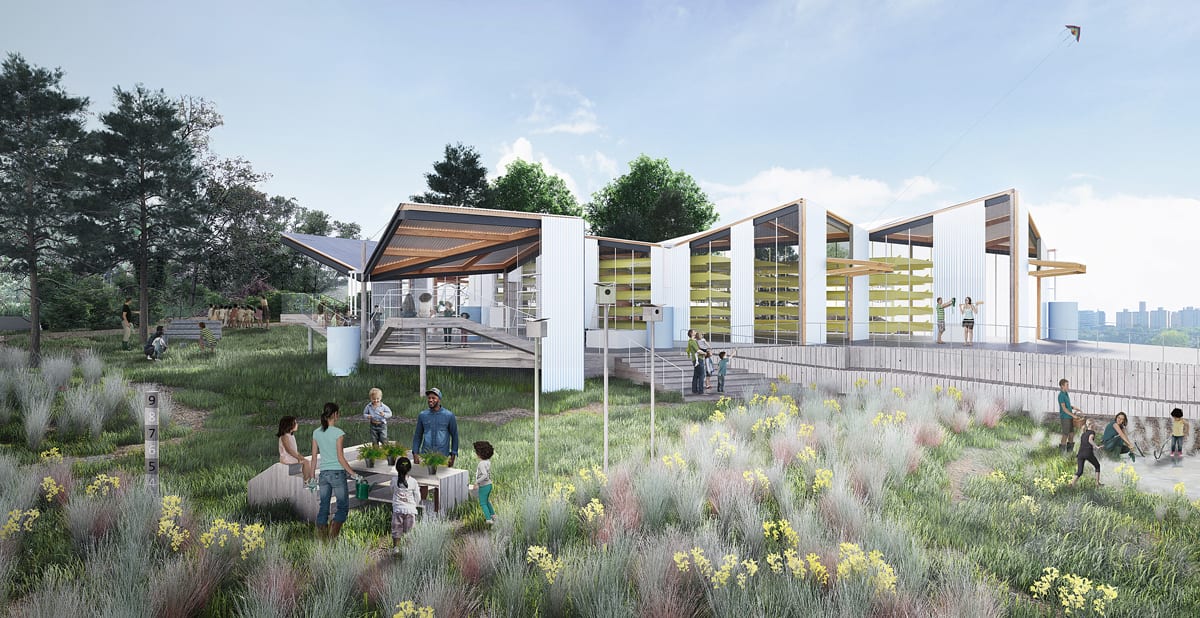
EDGEucation Pavilion designed by Urban Data and Design
UDD proposed an elevated education pavilion that intersects the elevated boat storage, connecting the two programmes by a walkway. When not in use as a classroom, or for boat storage, UDD proposed using their prefabricated steel truss structure for alternative programs such as a marketplace, kite festival and riverside cinema.

The Terrapin Shell designed by WORKac
The Terrapin Shell houses both the education space and the boat storage side by side, unified by a patterned roof-scape inspired by the shell of the Diamondback Terrapin. This roof, meant as both support and a camouflage would be the armature for a periscope, fish farm and a beehive and extend beyond the structure creating an open edge.




































